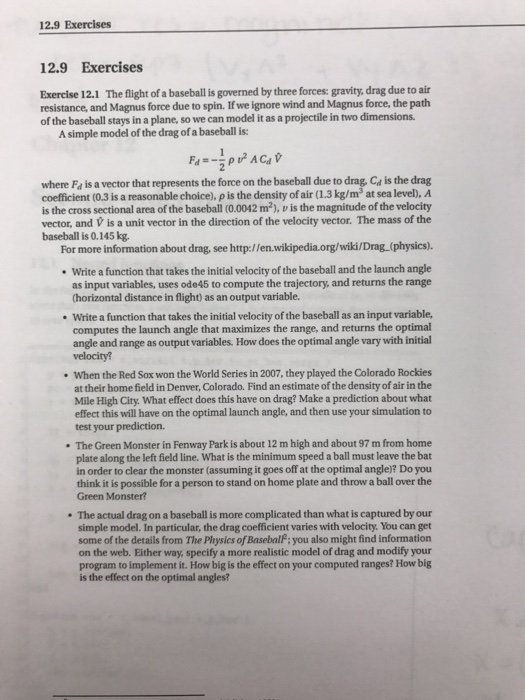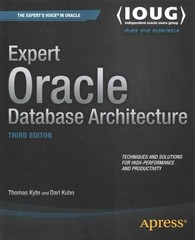The flight of a baseball is governed by three forces: gravity, drag due to air resistance, and Magnus force due to spin. If we ignore wind and Magnus force, the path of the baseball stays in a plane, so we can model it as a projectile in two dimensions. A simple model of the drag of a baseball is: F_d = - 1/2 rho v^2 C_d V^where F_d is a vector that represents the force on the baseball due to drag, C_d is the drag coefficient (0.3 is a reasonable choice), rho is the density of air (1.3kg/m^3 at sea level), A is the cross sectional area of the baseball (0.0042 m^2), v is the magnitude of the velocity vector, and V^is a unit vector in the direction of the velocity vector. The mass of the baseball is 0.145 kg. For more information about drag, see http://en.wikipedia.org/wiki/Drag_(physics). Write a function that takes the initial velocity of the baseball and the launch angle as input variables, uses ode45 to compute the trajectory, and returns the range (horizontal distance in flight) as an output variable. Write a function that takes the initial velocity of the baseball as an input variable, computes the launch angle that maximizes the range, and returns the optimal angle and range as output variables. How does the optimal angle vary with initial velocity? When the Red Sox won the World Series in 2007, they played the Colorado Rockies at their home field in Denver, Colorado. Find an estimate of the density of air in the Mile High City. What effect does this have on drag? Make a prediction about what effect this will have on the optimal launch angle, and then use your simulation to test your prediction. The Green Monster in Fenway Park is about 12 m high and about 97 m from home plate along the left field line. What is the minimum speed a ball must leave the bat in order to clear the monster (assuming it goes off at the optimal angle)? Do you think it is possible for a person to stand on home plate and throw a ball over the Green Monster? The actual drag on a baseball is more complicated than what is captured by our simple model. In particular, the drag coefficient varies with velocity. You can get some of the details from The Physics of Baseball^2; you also might find information on the web. Either way, specify a more realistic model of drag and modify your program to implement it. How big is the effect on your computed ranges? How big is the effect on the optimal angles







